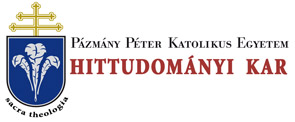Folia Theologica 4. (1993)
Recensiones
164 RECENSIONES In the first part the author summarizes and analyses the teaching and guidelines of the recent Magisterium on the nature of theology and on theologial teaching and research. He follows an historical sequence starting from the study of Vatican II documents leading up to the numerous allocutions, discourses, homilies etc. of John Paul IL This method makes it easier to appreciate not only the continuity involved, but also the different changes in emphasis apparent in the ecclesiastical magisterium from 1965, the year of the closing of the Council. The wealth of documentation gives evidence of the considerable interest on the part of the Church’s authority over the past few decades to the work of theology and charts the growing importance of the role of the tehologian in the Christian community. Having considered the guidelines of the ecclesiastical magisterium on the nature and mission of theological knowledge, the author passes on to evaluate the juridical status of theological faculties, which in many respects are similar to ecclesiastical departments in general, but in several points having their own particular characteristics. His analysis studies the present legal norms now in force, often in the context of their historical precedents, and outlines the main characteristics of the present-day norms, both from the point of view of the basic principles, as also in more detailed norms relating to administration, teaching staff, study curricula etc. A very complete index greatly facilitates consulatition and makes the book an extremely useful reference source for everyone interested in theological research and teaching. Philip CROSSEY AAVV., Erdélyi egyházaink évszázadai, (Die Siebenbürgischen Kirchen in den Jahrhunderten), Hrsg. Zoltán BARABÁS — Barna BODÓ — László MIKLÓS, Transii Rt, Bukarest 1992, 311 S. Dieses Taschenbuch, das von der „Romániai Magyar Szó” herausgegeben worden ist, steht einzigartig da in der Geschichte der siebenbürgischen Buchdruckerei. Seine Besonderheit besteht nicht darin, daß es eine thematische Lücke füllen würde, denn im Laufe der Jahrhunderte sind schon zahlreiche Bücher über die Geschichte der Kirche in Sienbürgen geschrieben worden. Doch dieses Buch ist das erste, das — in Form von acht Kurzmonografien — die Geschichte aller vier historischen ungarischen Kirchen — der römisch-katholischen, der reformierten, der unitarischen und der evangelisch-lutherischen Kirche — beschreibt. Die ersten 134 Seiten stellen die vier Diözesen der römisch-katolischen Kirche dar: die Erzdiözese Gyulafehérvár/Alba Julia/Karlsburg (S. 5-55); die Diözese Csanád und ihre siebenbürgisehe Nachfolgediözese Temesvár/Timisoara/Te-
